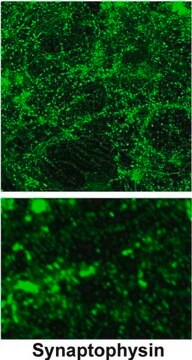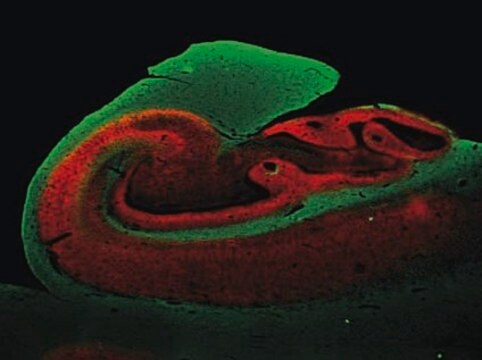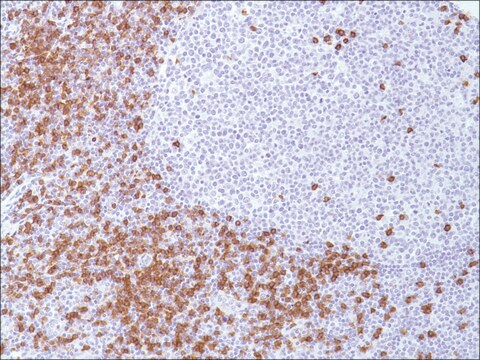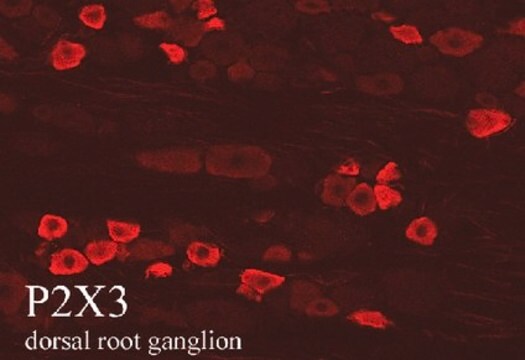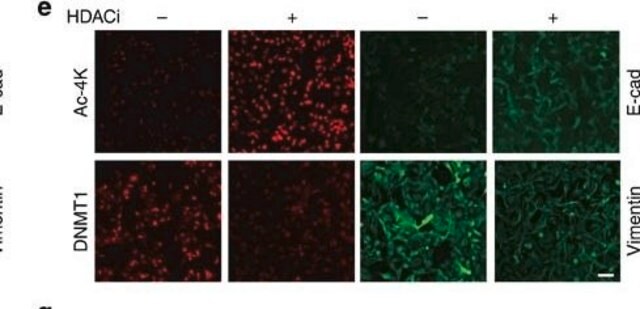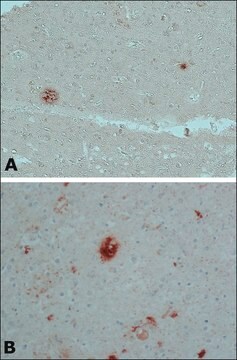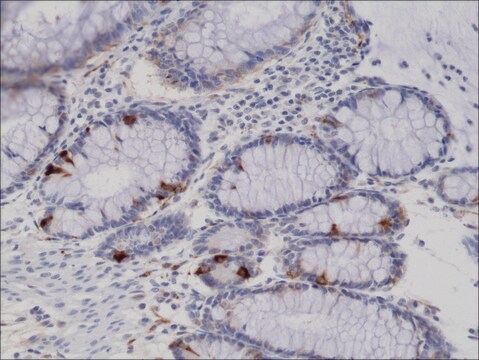SAB4200544
Anti-Synaptophysin antibody, Mouse monoclonal
clone SVP-38, purified from hybridoma cell culture
Sinónimos:
Monoclonal Anti-MRXSYP, Monoclonal Anti-SYP, Monoclonal Anti-Synaptophysin1, Monoclonal Anti-Synaptoporin, Monoclonal Anti-Syp1, Monoclonal Anti-p38
About This Item
Productos recomendados
origen biológico
mouse
Nivel de calidad
conjugado
unconjugated
forma del anticuerpo
purified immunoglobulin
tipo de anticuerpo
primary antibodies
clon
SVP-38, monoclonal
Formulario
buffered aqueous solution
mol peso
antigen 38 kDa
reactividad de especies
rat, human
concentración
~1.0 mg/mL
técnicas
immunohistochemistry: 10-20 μg/mL using formalin-fixed paraffin embedded rat cerebellum.
indirect immunofluorescence: 10-20 μg/mL using B35 cells.
western blot: 1-2 μg/mL using newborn rat brain extracts.
isotipo
IgG1
Condiciones de envío
dry ice
temp. de almacenamiento
−20°C
modificación del objetivo postraduccional
unmodified
Información sobre el gen
human ... SYP(6855)
Descripción general
Especificidad
Inmunógeno
Aplicación
- Immunoblotting
- Immunohistochemistry
- Immunofluorescence
Acciones bioquímicas o fisiológicas
Forma física
Cláusula de descargo de responsabilidad
¿No encuentra el producto adecuado?
Pruebe nuestro Herramienta de selección de productos.
Opcional
Código de clase de almacenamiento
10 - Combustible liquids
Punto de inflamabilidad (°F)
Not applicable
Punto de inflamabilidad (°C)
Not applicable
Elija entre una de las versiones más recientes:
¿Ya tiene este producto?
Encuentre la documentación para los productos que ha comprado recientemente en la Biblioteca de documentos.
Nuestro equipo de científicos tiene experiencia en todas las áreas de investigación: Ciencias de la vida, Ciencia de los materiales, Síntesis química, Cromatografía, Analítica y muchas otras.
Póngase en contacto con el Servicio técnico

